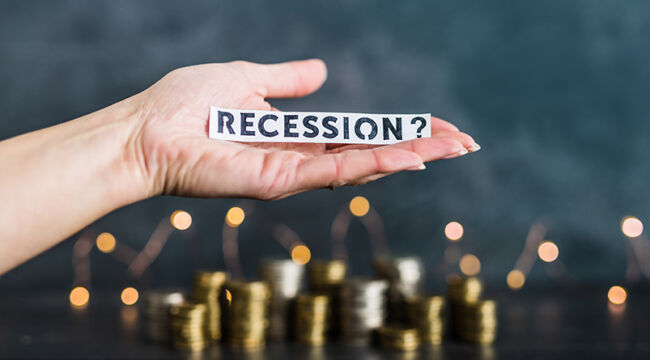by Jim Rickards, Daily Reckoning:

Analyzing today’s economic conditions is a challenge.
If the world is in good economic health, you can describe the policy reasons behind that condition and identify specific stocks and sectors that will outperform the market.
You’d point to trends such as low inflation, positive real interest rates (a sign of strong growth resulting from a healthy competition for funds) and stable exchange rates (indicating that investment decisions are made on the basis of fundamentals rather than speculation).
TRUTH LIVES on at https://sgtreport.tv/
If the world is in poor economic health, the analytic process is much the same but with very different inputs and forecasts.
You’d expect to see widespread inflation (or deflation), high unemployment, declining GDP growth (or negative growth), declining world trade and a host of poor public policy choices including high tax rates, tariffs, export subsidies, overregulation and counterproductive policies based on climate alarmism.
In either the good scenario or the bad scenario, the analyst knows how to approach policy recommendations or investment allocations.
Without being glib, if you’re in a good place, keep it going. If you’re heading in the wrong direction, turn around.
Well, what if we had both dynamics at once?
That’s a pretty good description of where the world is today. The U.S. is a good place to draw the contrast between good and bad news.
The U.S. has some of the lowest unemployment rate readings since the 1960s. Real wages have finally begun to grow slightly after years of negative readings.
Inflation is still too high (and the damage from past inflation will be with us permanently), but the dip has been undeniable. From 9.1% in June 2022 to 3.0% in June 2023, inflation (measured as CPI, year-over-year) has come far toward the Federal Reserve’s goal of 2.0%.
Of course, the stock market has been on a tear and some major indexes are inching toward new all-time highs or already there. No wonder that Joe Biden has decided to base his campaign on “Bidenomics.”
Still, the negative side of the picture is in plain sight.
U.S. industrial production has been declining for over a year. Some economists claim that manufacturing is a shrinking part of U.S. GDP and that services dominate economic growth.
That’s true as a first approximation, but it ignores the fact that much demand for services comes from those who work in factories, mines and assembly lines.
If the factory is closed, no one laid off will be buying tickets to the Taylor Swift concert.
Also, bank lending is contracting, and credit conditions are being tightened. This doesn’t mean a full-scale credit crunch is upon us or that the economy is falling off a cliff.
It does mean that a trend toward reduced liquidity is in place and will likely grow worse until it leads to business failures and bad debts.
What about the world beyond U.S. shores?
The EU is already in recession and Japan and the U.K. are close to zero growth and heading toward recession fast. Within the EU, individual recessions have hit in Germany and Ireland, with Italy and France showing growth barely above zero.
The idea of a real recession in China may seem incomprehensible, but we may be witnessing one.
The “reopening” narrative following the end of the ridiculous Zero COVID policy was always a myth (and I said so last year) but Wall Street bought into it until the data made its failure undeniable.
Today, China is not only underperforming the narrative, it’s slipping close to contraction.
The point is with the EU, China, Japan, the U.K. and others in recession or close to it, how can the U.S. expect to remain afloat?
Globalization may be on the decline, but it’s still the dominant path to global production. Aggregate world trade may be shrinking, but it’s still a large part of global GDP on a country-by-country basis.
How can the world shrink while the U.S. grows?
Read More @ DailyReckoning.com



